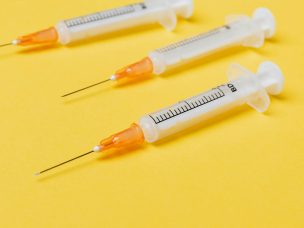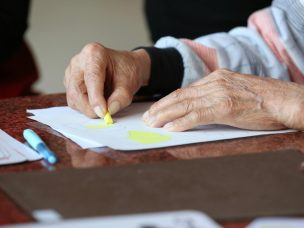A phase 3 study of risankizumab finds durable long-term efficacy and a stable safety profile in patients with active psoriatic arthritis.
Psoriatic arthritis (PsA) affects approximately 0.05–0.25% of the general population and 6–41% of psoriasis patients. As most PsA patients do not maintain minimal disease activity on current therapies, there is a need for effective long-term treatment.
KEEPsAKE 1, a global phase 3 trial published in the journal Rheumatology and Therapy, reported the 100-week long-term efficacy and safety of risankizumab in active PsA patients with an inadequate response or intolerance to one or more conventional synthetic disease-modifying antirheumatic drugs.
Study Method and Population
In the 24-week placebo-controlled period, patients were randomized to receive either risankizumab or placebo. Starting at week 28, all patients received open-label risankizumab (150 mg) every 12 weeks. Of the 964 randomized patients, 828 were enrolled by week 100 (continuous risankizumab: n = 412, placebo/risankizumab: n = 416). Baseline characteristics were comparable between the groups.
Durable Long-Term Efficacy in Joint-Related Measures of PsA
At week 24, significantly more patients receiving risankizumab (57.3%) achieved 20% improvement from baseline, according to American College of Rheumatology criteria (ACR20) compared with placebo (33.5%; p<0.001). At week 100, 64.3% and 62.1% of participants achieved ACR20 in the continuous risankizumab and placebo/risankizumab groups, respectively; these results were consistent with those at week 52 in both groups.
Similar trends were observed for ACR50 and ACR70 in both groups, with the proportion of patients achieving ACR50 and ACR70 increasing from week 24 and remaining stable from week 52 to week 100. The mean change from baseline in the PsA-modified Total Sharp Score indicated low radiographic progression through week 100. Most patients with enthesitis at baseline achieved resolution at week 100.
Achieves and Maintains Minimal Disease Activity
In the continuous risankizumab group, minimal disease activity (MDA) was achieved by 25%, 38.3%, and 38.2% of the participants at weeks 24, 52, and 100, respectively. In the placebo/risankizumab group, 10.2% achieved MDA at week 24, which improved to 28% and 35.2% at weeks 52 and 100, respectively.
Durable Effectiveness in Various PsA Efficacy Outcomes
The proportion of patients achieving a Psoriasis Area and Severity Index (PASI) score of 90 at week 100 was 71.3% and 67.8% in the continuous risankizumab and placebo/risankizumab groups, respectively; the proportion of patients was sustained from week 52 and increased from week 24.
Similar trends were demonstrated by other efficacy outcomes, including reductions in scores on the modified Nail Psoriasis Severity Index, Physician’s Global Assessment of Fingernail Psoriasis, Health Assessment Questionnaire–Disability Index, and pain assessment and improvement in Functional Assessment of Chronic Illness Therapy–Fatigue scores.
Long-Term Stable Safety Profile
Risankizumab was well-tolerated through 100 weeks. The most common treatment-emergent adverse events (TEAEs) through week 100 were COVID-19 infections and nasopharyngitis. TEAEs leading to study drug discontinuation were 2.1 events (E) per 100 patient-years (PY). Serious TEAEs occurred at a rate of 7.6 E/100 PY. There were no cases of active tuberculosis or opportunistic infections from week 52 to week 100. Three patients were reported to havenew malignant tumors after the week 52 cut-off. Six deaths occurred, none of which were deemed related to the study drug.
Source:
Kristensen, L. E., Keiserman, M. W., Papp, K., McCasland, L., White, D., Carter, K., Lippe, R., Photowala, H., Drogaris, L., Soliman, A. M., Chen, M., Padilla, B., & Behrens, F. (2024). Efficacy and Safety of Risankizumab for Active Psoriatic Arthritis: 100-Week Results from the Phase 3 KEEPsAKE 1 Randomized Clinical Trial. Rheumatology and Therapy. https://doi.org/10.1007/s40744-024-00654-5










